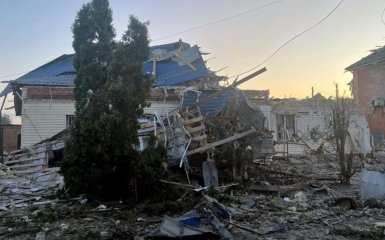Despite the fact that Ukraine has not officially confirmed its military presence on the territory of the Kursk region, the fighting there indicates three main goals of Ukraine. This situation is analyzed by The Telegraph.
Points of attention
- The Ukrainian military offensive in Kurshchyna aims to withdraw Russian troops from offensive operations in Donetsk.
- Ukraine is working to sow discord within Russia through cross-border operations in the Kursk region as a strategic objective.
- The offensive in Kurshchyna may impact future negotiations on the exchange of territories between Ukraine and Russia, shaping the geopolitical landscape in the region.
- The ongoing operations in Kurshchyna highlight Russia's limited response to Ukraine's offensive and the potential consequences of Ukraine's actions.
- The Armed Forces of Ukraine's offensive near Kursk could have significant implications, including potential disruption of Russian gas supplies to Europe.
Ukraine has three goals of the military operation in Kurshchyna
After more than two years of Russian military aggression, Ukraine is on the offensive. On the morning of August 6, at least 300 Ukrainian servicemen probably crossed the Russian border in Kursk.
After the attack on border patrols in Mykolaiv-Daryna and Oleshna, Ukrainian troops quickly occupied 350 square kilometers of Russian territory and took dozens of Russians prisoner, the publication writes.
Offensive operations of Ukraine in Kurshchyna are not slowing down. It is reported that during the night, Ukrainian forces seized control of Suja, entered the outskirts of Korenevo, and advanced north to Malaya Lokna.
In less than forty-eight hours, Ukraine seized more territory than during the entire counteroffensive of the summer of 2023, according to The Telegraph.
According to the regime of operational secrecy, the General Staff of Ukraine does not comment on the invasion of Kursk. Despite Kyiv's radio silence, it is quite obvious that the offensive on the Kursk region advances three key Ukrainian goals.
The first is the withdrawal of Russian troops from offensive operations in Donetsk. Over the past week, Russian troops have partially taken control of the villages of Progress, Yevgenivka, and New York. Although Ukraine denies the Russian Federation's statement about Russia's capture of New York, Zelenskyy recently admitted that "it is difficult on the entire Eastern Front." With the prospect of major gains in the Kharkiv offensive remote, Russia may divert even more conscripts to Donetsk in the coming weeks. Ukraine's Kursk offensive operation complicates this process.
The second is sowing discord within Russia. Since Russia regained minor offensive momentum in early 2023, pro-Ukrainian Russian guerrillas have periodically invaded Russian territory. In May and June 2023, RDK and LSR briefly occupied several border settlements of Belgorod. These cross-border operations extended to Kursk in March 2024. The raids were intended to destroy Russia's increasingly fragile sense of security and show the Russian public that war could come to them.
Ukraine's current offensive on the Kursk region begins where these raids ended. Despite the fact that the Russian Ministry of Defense quickly announced that it was eliminating 300 "Ukrainian militants" who crossed the border, President Vladimir Putin was forced to call a meeting of the Security Council and publicly criticize Ukraine's "great provocation". Russian pro-war Telegram channels ignored the Ministry of Defense's calls for calm, emphasizing the seriousness of the situation and expressing disappointment at the slow deployment of reinforcements to Kursk.
Third, promote the territory exchange agreement during future negotiations. Mykhailo Podolyak, Zelenskyi's adviser, said that Ukraine launched an offensive on the Kursk region in order to strengthen its future negotiating position. It is possible that the exchange of the territories of Kharkiv Oblast for Kursk Oblast will be discussed. Although it is unclear whether Ukraine will be able to hold the villages there, the offensive has shown that breaking into Russian territory is easier than destroying Russian fortifications in eastern Ukraine.
Despite its initial momentum, Ukraine's advance in Kurshchyna is likely to be short-lived. Western and internal pressure will probably force Kyiv to change course. The US is clearly embarrassed by Kyiv's actions, and European gas prices have risen to 2024 highs due to Ukraine's seizure of the Suja gas export hub. Internal criticism regarding the diversion of precious manpower from the main front lines and civilian spending may convince Kyiv to back down, the publication writes.
However, the offensive of the Armed Forces of Ukraine near Kursk shows that Russia has not learned the lessons of the rapid capture of Rostov by the Wagner Group during the mutiny in June 2023. Apart from the alleged threats of destruction of Ukraine and the use of tactical nuclear weapons, Russia did not react significantly to the attack on the Kursk region. With F-16s also arriving on the front lines, Putin has plenty to worry about.
What is known about the taking control of the Gazprom station in Kurshchyna by the Armed Forces of Ukraine
The offensive of the Ukrainian military in the Kursk region may be the largest ground operation on the territory of the Russian Federation since the Second World War.
In the article of The Washington Post, citing an unnamed American official, it is noted that the United States is currently trying to contact the leadership of Ukraine to obtain more details about the situation in the Kursk region.
The journalists emphasize that according to one of the advisers of the President Volodymyr Zelenskyi, the Ukrainian military took control of a gas measuring station at a distance of about 8 km from the border.
Some analysts have suggested that Kyiv's goal may be to completely cut off Russian gas supplies to Europe as a point of influence. On Thursday, gas was still flowing through Suja, the last operating shipping point of the pipeline that transports Russian natural gas to Europe via Ukraine. Ukraine receives lucrative transit fees, but has expressed a desire to cut off the rest of Russia's energy business in Europe, the publication emphasizes.




